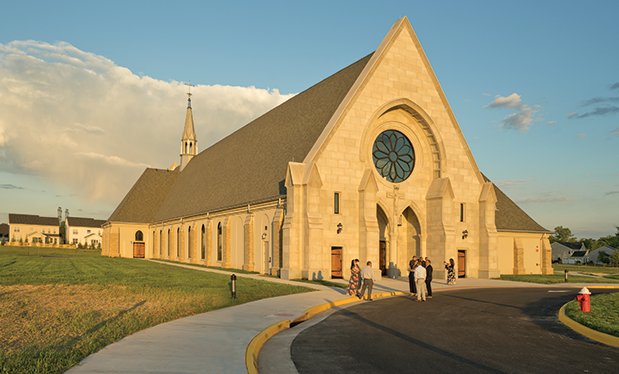Additional H-2B visas available for fiscal year 2022

|
On May 16, the Department of Homeland Security and Department of Labor announced the availability of an additional 35,000 visas for the H-2B temporary nonagricultural worker program for the second half of fiscal year 2022. The visas are available to qualifying U.S. employers seeking to supplement their workforces from April 1 through Sept. 30.
The H-2B program has been used by NRCA members for many years to address their workforce needs during peak season. In January, former NRCA CEO Reid Ribble sent a letter to Secretary of Homeland Security Alejandro Mayorkas and Secretary of Labor Marty Walsh urging the administration to provide additional H-2B visas given the roofing industry’s significant labor shortage. NRCA commends the DHS action because it will help more seasonal businesses, including many roofing contractors, get the workers they need to meet consumer demand in 2022.
The 35,000 supplemental visa allocation consists of 23,500 visas available to returning workers who received an H-2B visa or were otherwise granted H-2B status during one of the past three fiscal years. The remaining 11,500 visas are reserved for individuals from El Salvador, Guatemala, Haiti and Honduras.
OSHA may revoke final approval of Arizona’s state plan

|
The Department of Labor has announced a proposal to reconsider and revoke final approval of Arizona’s state plan in response to the state’s years-long pattern of failures to adopt and enforce standards and enforcement policies at least as effective as those used by the federal Occupational Safety and Health Administration.
State plans are OSHA-approved job safety and health programs operated by individual states rather than federal OSHA. The OSH Act encourages states to develop and operate their programs. OSHA approves and monitors all state plans and provides up to 50% of each program’s funding.
OSHA has grown increasingly concerned because actions by Arizona’s state plan suggest the state is unable or unwilling to maintain its commitment to providing a program for worker safety and health protection as the OSH Act requires. For example, Arizona reportedly has failed to adopt adequate maximum penalty levels, occupational safety and health standards, National Emphasis Programs and the COVID-19 Healthcare Emergency Temporary Standard.
If OSHA determines a state plan is failing to comply with its obligation to remain at least as effective as OSHA, the agency may initiate proceedings to revoke final approval and reinstate federal concurrent authority over occupational safety and health issues covered by the state plan.
The proposal is available at federalregister.gov. With the publication of its proposal, OSHA marks the start of the revocation process. The notice does not make any substantive changes to the Arizona state plan or give federal OSHA the authority to enforce occupational safety and health standards in Arizona.
Comments about the proposal were due May 26. If necessary, OSHA will hold an online hearing Aug. 16 at 10 a.m. EDT. Once OSHA has considered comments and reviewed testimony and evidence collected in the event of a hearing, it will publish a second Federal Register notice announcing its decision regarding revocation of final approval.
Report suggests climate change poses risk to construction workers

|
A report from the nonpartisan California Legislative Analyst’s Office suggests climate change poses a particular risk to California workers, including construction workers, who cannot avoid outdoor exposure, and the risk is increasing, according to constructiondive.com.
The analysis reveals construction workers face increased occupational risks and health hazards from greater exposure to elements such as heat and air pollution. Construction workers also are at greater risk of decreased productivity and disruptions from extreme heat and wildfire smoke threats, for example, that cause delays and make work less stable and predictable.
According to the report, low- and middle-wage workers and Latinos are at higher risk because those population groups make up about 60% of California’s outdoor workforce.
California faces five major hazards resulting from climate change: higher temperatures and extreme heat; more frequent and intense drought; increased flood risk; worsening wildfires; and coastal flooding and erosion. Based on the report’s findings, the California Legislative Analyst’s Office suggests taking preemptive steps to help workers and industries adapt could lead to better long-term health outcomes and fewer economic effects.
The California Legislative Analyst’s Office encourages state lawmakers to consider the role the state should play in addressing climate concerns; for example, in its budget and climate action planning, the legislature could consider the increased costs for its employees fighting wildfires and other climate effects.
Although the report focuses specifically on climate effects in California, many of the points can apply to construction workers throughout the U.S. Construction organizations and companies are collaborating regarding how the industry should respond to climate change. For example, Associated General Contractors of America has a climate task force that in 2021 released recommendations for reducing construction’s climate effects, and contractors often make plans for extreme weather conditions during the early stages of projects.



